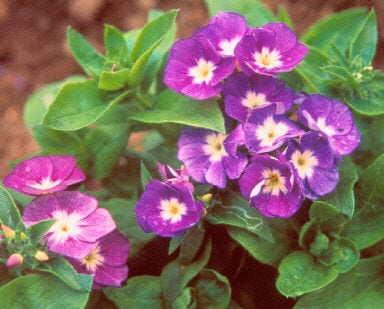Not the plant you're looking for? Search over 300,000 plants
Annual BiennialBedding
Size
Ultimate height
0.1–0.5 metresTime to ultimate height
1–2 yearsUltimate spread
0.1–0.5 metresGrowing conditions
Chalk
Clay
Loam
Sand
Moisture
Well–drainedpH
Acid, Alkaline, NeutralColour & scent
| Stem | Flower | Foliage | Fruit | |
| Spring | Green | |||
|---|---|---|---|---|
| Summer | Blue White | Green | ||
| Autumn | Blue White | Green | ||
| Winter |
Position
- Full sun
Aspect
South–facing or West–facing
Exposure
Exposed or Sheltered Hardiness
H6Botanical details
- Family
- Polemoniaceae
- Native to GB / Ireland
- No
- Foliage
- Deciduous
- Habit
- Columnar upright
- Genus
Phlox may be evergreen or herbaceous, mat-forming or erect perennials or shrubs, with simple leaves and salver-shaped flowers in terminal clusters
- Name status
Accepted
How to grow
Cultivation
Grow in fertile, moist soil in full sun or partial shade. See phlox cultivation for further advice
Propagation
Propagate by seed
Suggested planting locations and garden types
- Patio and container plants
- Cottage and informal garden
- Flower borders and beds
Pruning
No pruning required
Pests
May be susceptible to phlox eelworm
Diseases
May be susceptible to powdery mildews and a leaf spot
Get involved
The Royal Horticultural Society is the UK’s leading gardening charity. We aim to enrich everyone’s life through plants, and make the UK a greener and more beautiful place.
